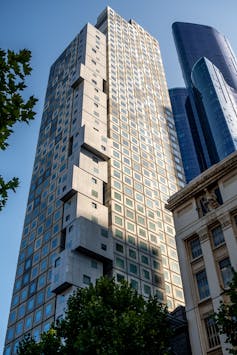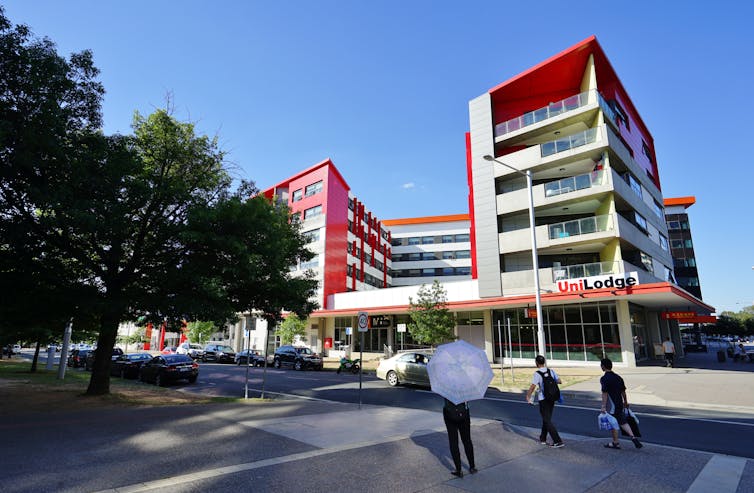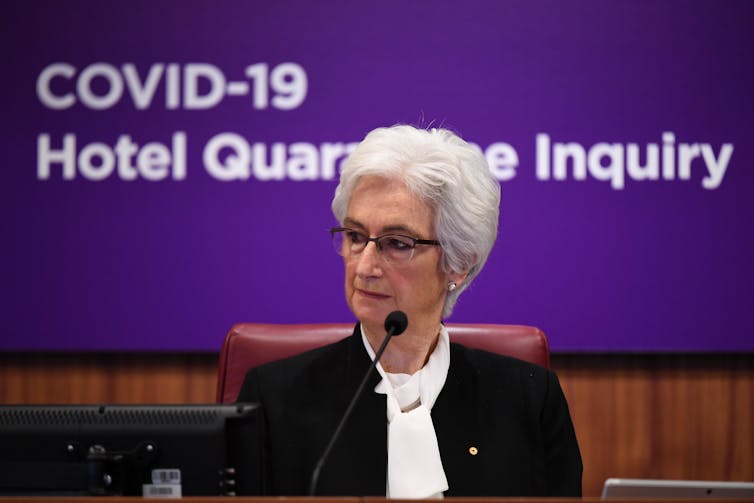How unis can use student housing to solve international student quarantine issues
- Written by Christopher Ziguras, Professor of Global Studies, RMIT University
The arrival at Darwin airport on Monday of 63 students from China, Hong Kong, Japan, Vietnam and Indonesia on a charter flight from Singapore ended an eight-month hiatus in international student arrivals in Australia. They are now in the Howard Springs quarantine facility.
Read more: 5 ways Australia can get ahead in attracting and retaining Chinese international students
Quarantine capacity is a major issue, given the numbers of international students. Using student accommodation to quarantine newly arrived students is a way to increase this capacity. Our research, released today, shows this could be important for solving the quarantine issue.
But shouldn’t Australians get priority?
Over the years we have become accustomed to hundreds of thousands of young learners crossing our borders. In airport arrival halls incoming international students rubbed shoulders with Australian students returning from exchanges, study tours and internships. In departure lounges departing international students, with perhaps some hints of an Australian twang in their accents, mingled with Australian students setting off on their big adventures.
 Senator Jacqui Lambie is among those opposed to international students returning now.
Mick Tsikas/AAP
Senator Jacqui Lambie is among those opposed to international students returning now.
Mick Tsikas/AAP
Despite student mobility being a normal feature of modern Australia, it was inevitable “Australians first” critics would deride the arrivals. Tasmanian Senator Jacquie Lambie said she found the student quarantine program “sickening”.
The Department of Home Affairs said the students arriving in Darwin were in addition to the government’s returning passenger caps. And that is the way it should be. Just as international students do not displace any local students from university places, it is important their arrival does not delay the return of Australian citizens and permanent residents.
All Australian states are considering plans to create secure corridors for students to return for the 2021 academic year. Universities, schools and colleges across the country are planning for their return, albeit with some online learning continuing to allow for social distancing on campus. The Commonwealth has sadly remained lukewarm on the states’ proposals to date.
Student housing provides an answer
The investment in purpose-built student accommodation over the past decade has been enormous.
 Large developments, such as Urbanest in Sydney, have expanded student housing capacity in Australia’s capital city CBDs to nearly 67,000 beds.
Tony Ng/Shutterstock
Large developments, such as Urbanest in Sydney, have expanded student housing capacity in Australia’s capital city CBDs to nearly 67,000 beds.
Tony Ng/Shutterstock
Our research identified nearly 67,000 beds in this form of accommodation in Australia’s capital city CBDs alone. The Student Accommodation Association estimates there are over 95,000 beds Australia-wide. Major developments are due to open soon that will swell those numbers.
As well as dramatic increases in scale, the character of this purpose-built accommodation has changed significantly. Older student dormitories are relatively small and closely affiliated with universities, religious orders and other not-for-profit organisations. The newer commercial developments are large-scale properties, usually in city centres.
 The Scape tower in Melbourne has 754 student apartments over 45 levels.
woolver/Shutterstock
The Scape tower in Melbourne has 754 student apartments over 45 levels.
woolver/Shutterstock
According to City of Melbourne data, between 2011 and 2018 the average height of purpose-built student accommodation increased from five storeys to 24. The average number of beds increased from 82 to 579! The largest planning application for a new property in Melbourne comprised 901 beds across 49 storeys, while the tallest building is 63 storeys with 740 beds.
A large proportion of these beds are now sitting empty. These facilities provide an ideal means for developing parallel pathways for these students to return to Australia without using existing channels for repatriating Australians. Whole buildings with hundreds of beds could easily be dedicated to housing the international students waiting to begin or resume their studies here.
 Purpose-built student accommodation, such as this property in Canberra, has the capacity and facilities to quarantine returning international students.
EQRoy/Shutterstock
Purpose-built student accommodation, such as this property in Canberra, has the capacity and facilities to quarantine returning international students.
EQRoy/Shutterstock
How would student quarantine work?
The design of these buildings varies considerably. Authorities would be able to choose from many different bedroom and communal space configurations.
At first, it is likely quarantine authorities will want students to be kept in isolation for 14 days, so student apartments with their own kitchenettes and bathrooms are likely to be chosen. Over time, as confidence builds and systems to manage risks are refined, small clusters may be possible, using buildings in which several rooms share a kitchen and living space.
In either model, student accommodation properties are better suited to quarantine than hotels. They already provide pastoral care, security and staff attuned to the needs of newly arrived young people as a matter of course.
They should have no trouble implementing rigorous quarantine requirements to ensure no further outbreaks are caused by contagion through support staff, as has occurred in other contexts in Melbourne and Adelaide. Staff would have minimal contact with student residents. Meals could be left at the door, and rubbish collected at the door.
Staff and education providers could deliver support services by phone and video. Many universities are already providing daily exercise classes and arranging virtual meet-ups. These programs could easily be tailored to students in quarantine.
We have learned much this year about how to reduce the risk of transmission from incoming travellers. We know contact between quarantine workers and the broader community poses a serious risk. Thus, most staff working in student quarantine facilities would likely live on site. The scale of the newer properties makes this easy to implement.
 One lesson from Victoria’s Hotel Quarantine Inquiry is the desirability of housing staff onsite.
James Ross/AAP
One lesson from Victoria’s Hotel Quarantine Inquiry is the desirability of housing staff onsite.
James Ross/AAP
Risks can be further reduced by arranging direct flights from a city with few cases to an Australian city where the students are transported directly to one facility, thereby avoiding flight transfers in busy hub airports. Testing would be required prior to departure and again before leaving quarantine. Staff would be tested regularly.
Students and education providers cover costs
These arrangements need place no burden on the Australian community. The Darwin model, in which students pay for their flights and the university covers quarantine costs, seems like a reasonable split.
Curiously, Charles Darwin University was not the first Australian university to organise charter flights and dedicated quarantine arrangements for students. In September, RMIT chartered a flight from Melbourne to Vietnam to return 270 people, including many students from RMIT’s Vietnam campus who had been on exchange in Melbourne when the virus hit, as well as RMIT staff and business partners. A second RMIT charter flight from Melbourne landed in Da Nang on November 28.
Australia’s international education sector has the capacity to manage such logistics. Our universities have extensive experience in moving tens of thousands of students around the world every year. Our accommodation providers have huge capacity in new facilities specifically designed for students.
Expanding parallel pathways for students to return to Australia need not interfere at all with the return of Australians.
Authors: Christopher Ziguras, Professor of Global Studies, RMIT University



















